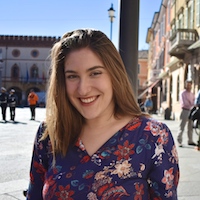More about Emil Nolde
- All
- Info
- Shop
Works by Emil Nolde

Contributor
Emil Nolde, the German expressionist born Emil Hanson, was the Harvey Two-Face of modernist artwork during the late 19th and early 20th century.
His religious fervor bled into his paintings of which a whopping 55 works were dedicated to sacred themes, but despite his supposed spirituality, Nolde also produced plenty of painting that reflect his 1911 foray into the wild Berlin nightlife with his wife. The pair immersed themselves in the “decadent spectacle of the demi-monde, the dregs of society, music halls and streetwalkers with their pale makeup” that led Nolde to create images of decomposing figures entrenched in the debauchery of the night.
The stark contrast between the subject matter of his work was one of the issues that kept many observers confused as to Nolde’s true stance on religion and spirituality. The other main concern was his interest in and desire to join Germany’s National Socialist Party and his support of Hitler.
Nolde was considered at Nazi artist, at least until Hitler rejected all forms of modernism and the Nazi regime flat-out condemned his artwork. The Nazi party removed 1,052 of Nolde’s works from museums and galleries around Germany because Hitler considered Nolde’s work to be “impossible.” His religious themes coupled with his paganistic pieces led the Third Reich to hate his art even more than they loved his party allegiance.
After deeming his artwork unacceptable, the Nazi party forbid him to paint, even in private. Nolde, not being the type to follow rules despite being a Hitler-supporter, secretly created hundred of watercolors after being banned from continuing as an artist. He called these works the “Unpainted Pictures” and continued confusing everyone who tried to put a label--be it religious, pagan, nazi, or anti-nazi--until he died in 1956.
Sources
- Jumeau-Lafond, Jean-David. Emil Nolde (1867-1956). 2008 [cited Sept. 22 2017]. Available from http://www.thearttribune.com/Emil-Nolde-1867-1956.html.
- The Editors of Encyclopædia Britannica. Emil Nolde. 2017 [cited Sept. 22 2017]. Available from https://www.britannica.com/biography/Emil-Nolde.
- Knubben, Thomas. Emil Nolde: Unpainted Pictures. Ostfildern-Ruit, Germany: Hatje Kantz Publishers, 2000. p. 141.
- Hall, Susan. Degenerate Art in Nazi Germany. 2014 [cited Sept. 22, 2017.]. Available from http://www.berkshirefinearts.com/04-13-2014_degenerate-art-in-nazi-germ….
- Knubben, Thomas. Emil Nolde: Unpainted Pictures. Ostfildern-Ruit, Germany: Hatje Kantz Publishers, 2000. p. 141.
- Jumeau-Lafond, Jean-David. Emil Nolde (1867-1956). 2008 [cited Sept. 22 2017]. Available from http://www.thearttribune.com/Emil-Nolde-1867-1956.html.
Featured Content
Here is what Wikipedia says about Emil Nolde
Emil Nolde (born Hans Emil Hansen; 7 August 1867 – 13 April 1956) was a German painter and printmaker. He was one of the first Expressionists, a member of Die Brücke, and was one of the first oil painting and watercolor painters of the early 20th century to explore color. He is known for his brushwork and expressive choice of colors. Golden yellows and deep reds appear frequently in his work, giving a luminous quality to otherwise somber tones. His watercolors include vivid, brooding storm-scapes and brilliant florals.
Nolde's intense preoccupation with the subject of flowers reflected his interest in the art of Vincent van Gogh.
Even though his art was included in the Entartete Kunst exhibition of 1937, Nolde was a member of the Nazi Party, with racist and antisemitic views, and a staunch supporter of Nazi Germany.
Check out the full Wikipedia article about Emil Nolde

















